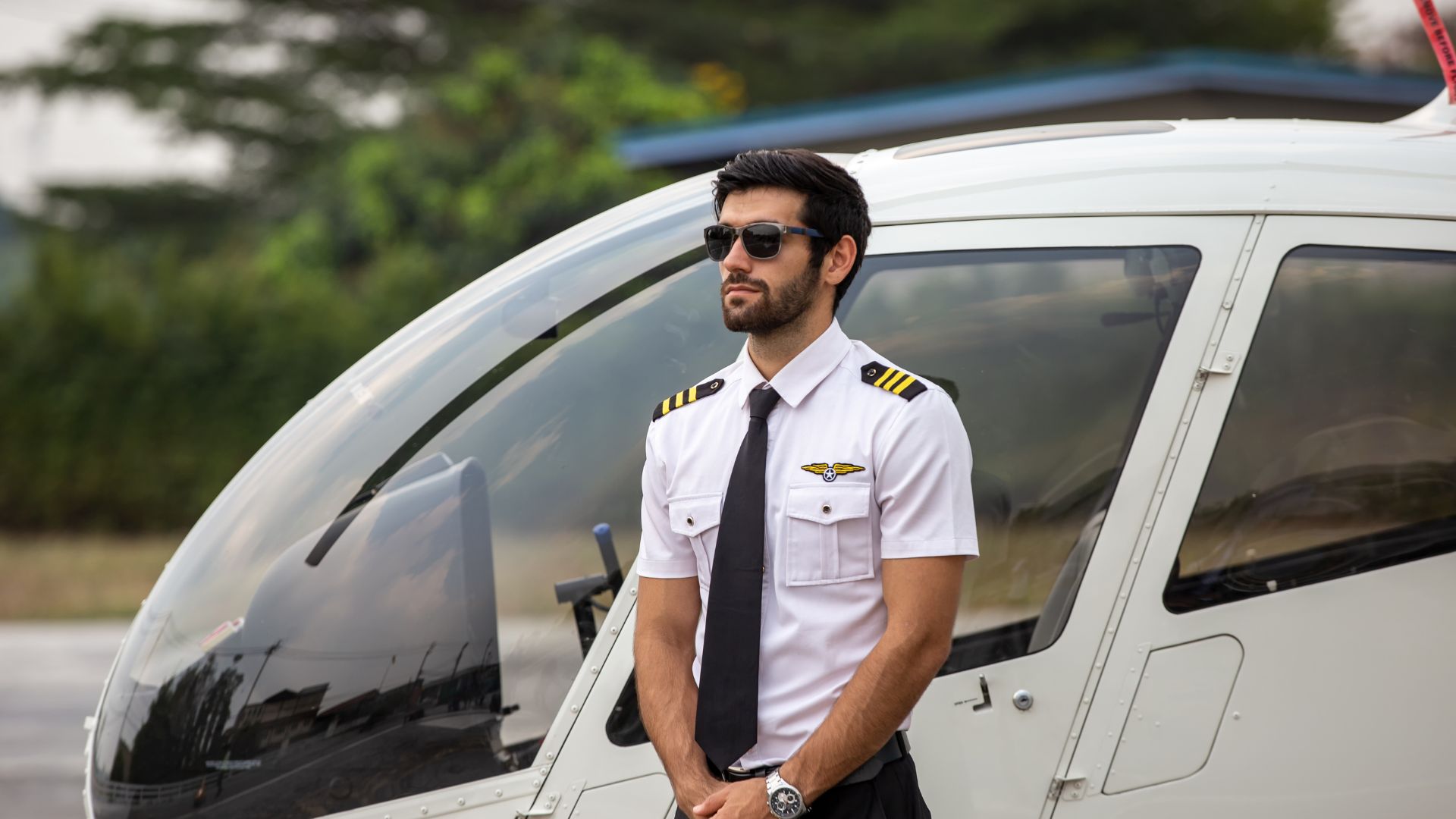The allure of soaring through the skies, commanding a powerful machine like a helicopter, is a dream for many. Obtaining a helicopter pilot license unlocks this dream, offering a unique blend of freedom, skill, and adventure. From the breathtaking views to the intricate art of piloting, having this license allows one to experience the world from a whole new perspective. Whether for personal satisfaction, professional aspiration, or the sheer thrill of flight, a helicopter pilot license stands as a gateway to an extraordinary world above the ground.
This blog post aims to guide aspiring pilots through the journey of obtaining a helicopter pilot license. By shedding light on what this license entails and the steps required to achieve it, we aspire to turn the daunting process into an achievable goal.
1. Overview of Helicopter Pilot License
A helicopter pilot license is an official certification that authorizes an individual to operate a helicopter. This license is not just a permit; it’s a testament to the holder’s mastery of various skills needed to safely and effectively pilot a helicopter.
This includes understanding helicopter mechanics, mastering navigational techniques, and handling unexpected situations mid-air. The significance of this license extends beyond personal achievement; it’s a crucial requirement for various career paths in aviation, such as aerial tours, emergency medical services, and even in the realms of business or military aviation.
Requirements and Qualifications for Obtaining a Helicopter Pilot License
One must meet certain prerequisites and complete a series of steps to obtain a helicopter pilot license. These include age and medical fitness requirements, theoretical knowledge examinations, and a specific number of flight training hours under the supervision of a certified instructor. Additionally, candidates must pass practical tests that assess their ability to control the helicopter in various conditions and scenarios.
2. Choosing the Right Training Program
Embarking on the journey to obtain a helicopter pilot license begins with selecting the right training program. This choice is pivotal in shaping your flying experience, skills, and career prospects. There are several types of training programs available, each catering to different needs and goals.
Types of Helicopter Pilot Training Programs:
- Private Pilot License (PPL-H) Programs: These are designed for individuals looking to fly helicopters for personal and recreational purposes. The training focuses on basic helicopter controls, navigation, and safety procedures.
- Commercial Pilot License (CPL-H) Programs: Aimed at those who wish to pursue a career in helicopter flying. These programs cover advanced flying techniques, commercial flight regulations, and often include instrument rating training.
- Military Training Programs: These are specialized programs for individuals looking to fly helicopters in military operations. They are rigorous and combine advanced flight training with military protocols.
- Integrated Training Courses: These comprehensive programs take students from beginners to commercial license holders. They are intensive and fast-paced, covering all aspects of helicopter flying.
- Modular Training Courses: These courses allow for more flexibility, letting students complete their training in stages. This is ideal for those who cannot commit to full-time training.
Selecting a Reputable and Approved Training Program
When choosing a training program, it’s crucial to ensure that the program is recognized and approved by the relevant aviation authorities. Here are some tips to help you make an informed decision:
- Accreditation: Verify that national or international aviation organizations accredit the program.
- Reputation: Research the training program’s history and reputation within the aviation community.
- Success Rate: Look at the success rate of the program’s graduates in obtaining their licenses and securing employment.
- Alumni Feedback: Seek feedback from former students to understand their experiences and outcomes.
Choosing the right helicopter pilot training program is a decision that should be made with thorough research and consideration of your personal goals and circumstances. By carefully evaluating these factors, you can embark on a training journey that is both rewarding and aligned with your aspirations in aviation.
3. Meeting the Medical Requirements

Photo credit: instagram.com
One of the critical steps in obtaining a helicopter pilot license is meeting the medical requirements. These requirements are in place to ensure that pilots are in good health and can safely operate a helicopter. Understanding and fulfilling these medical prerequisites is essential for every aspiring helicopter pilot.
The specific medical requirements can vary depending on the country and the type of license (Private Pilot License or Commercial Pilot License). However, some general standards are universally applicable:
- General Health: Pilots must be in good general health, without any medical conditions that could impair their ability to fly safely.
- Vision: Good vision is crucial, although glasses or contact lenses are typically permitted. Pilots must meet certain vision standards, both for distance and near vision.
- Hearing: Pilots must have adequate hearing, often tested with or without hearing aids.
- Neurological Health: Pilots must not have a history of neurological disorders that could affect their helicopter pilot ability.
- Cardiovascular Health: A healthy cardiovascular system is necessary, with specific standards varying by the licensing authority.
- Mental Health: Mental fitness is as important as physical health. Pilots must not have any mental health conditions that could impair their judgment or performance.
Guidance on Meeting Medical Requirements
Meeting these medical requirements typically involves undergoing a medical examination by an aviation-certified doctor. Here’s how you can prepare for and complete this process:
- Find an Aviation Medical Examiner (AME): Locate a doctor certified by the aviation authority in your country (e.g., FAA in the United States) to conduct pilot medical examinations.
- Schedule an Appointment: Make an appointment for a comprehensive medical examination. Doing this early in your training process is advisable to ensure that you meet the medical standards.
- Prepare for Your Examination: Be ready to provide a complete medical history and undergo various tests, such as vision, hearing, heart function, and neurological tests.
- Follow-up and Certification: The AME will advise if you meet the medical standards after the examination. If you do, you will receive a medical certificate, which is a prerequisite for a pilot license.
It’s important to note that some medical conditions may not automatically disqualify you from obtaining a pilot license. In some cases, waivers or special issuances can be granted if the condition is well-managed and does not pose a safety risk.
In summary, meeting the medical requirements is a crucial step in your journey to becoming a helicopter pilot. By understanding these requirements and actively preparing for the medical examination, you can ensure that you are both medically and legally fit to take to the skies as a pilot.
4. Ground School Training
Before you can take to the skies, ground school training lays the foundational knowledge every helicopter pilot needs. This training is a crucial component of the licensing process, equipping aspiring pilots with the theoretical aspects of flying.
Ground school training is designed to provide you with the necessary theoretical knowledge to operate a helicopter safely and efficiently. This training covers a wide range of topics and is essential for both passing the written examination and becoming a competent pilot.
Topics Covered in Ground School
Ground school encompasses various subjects, each playing a vital role in your training:
- Aviation Regulations: Understanding the rules and regulations of the aviation industry is crucial for legal and safe flying.
- Meteorology: Knowledge of weather patterns and their impact on flight is essential for safe operation.
- Navigation: Learning to navigate using visual references and instruments ensures pilots can find their way under various conditions.
- Helicopter Operations: This includes learning about the different helicopter systems, their functions, and maintenance.
- Flight Planning: Skills in planning flights, including fuel management and route selection.
- Communication: Understanding air traffic control communication and proper radio procedures.
5. Flight Training
After mastering the theoretical aspects, flight training is where you put your knowledge into practice. This is a thrilling and crucial part of your journey to becoming a licensed helicopter pilot.
Flight training is essential for acquiring the practical skills necessary to operate a helicopter. This hands-on experience is where you learn to apply your ground school knowledge in real-world flying situations.
Stages and Components of Flight Training:
- Basic Maneuvers: Learning the fundamental controls and maneuvers of helicopter flying.
- Advanced Flying Techniques: Training will include more complex flying techniques as skills progress.
- Emergency Procedures: Understanding and practicing how to handle emergency situations.
- Solo Flights: Eventually, you will progress to flying solo, a significant milestone in any pilot’s training.
- Cross-Country Flights: Learning to fly longer distances, often with different weather and airspace conditions.
Both ground school and flight training are integral to becoming a skilled and competent helicopter pilot. By dedicating yourself to both aspects of training, you’ll be well on your way to achieving your helicopter pilot license.
6. Practical Test Preparation

Photo credit: instagram.com
After completing your ground school and flight training, the next step in your journey is the practical test, also known as the check ride. This test is a comprehensive evaluation of your flying skills and theoretical knowledge. The practical test typically consists of two parts:
- Oral Examination: This is a question-and-answer session where the examiner assesses your knowledge of aviation theory, helicopter operations, and emergency procedures.
- Flight Test: In this part, you will be evaluated on your ability to operate a helicopter safely and competently. This includes pre-flight inspections, navigation, performing various maneuvers, handling emergencies, and post-flight procedures.
7. Applying for the License
Once you have successfully passed the practical test, you are eligible to apply for your helicopter pilot license. The application process involves several steps:
- Complete the Necessary Paperwork: This includes filling out the application form, which can be obtained from the aviation authority or online.
- Submit Proof of Training: You will need to provide evidence of your completed ground school and flight training hours.
- Medical Certificate: Include your valid medical certificate, as this is a requirement for the license.
- Practical Test Results: Submit the documentation showing that you have passed the practical test.
- Application Fee: Be prepared to pay the required fee for processing your application.
Successfully applying for and obtaining your helicopter pilot license is the culmination of hard work, dedication, and passion for flying. By thoroughly preparing for each stage of the process and carefully completing the application, you will be well on your way to becoming a licensed helicopter pilot.
In this guide, we’ve journeyed through the essential steps to obtaining a helicopter pilot license, from selecting the right training program and meeting medical requirements to the intricacies of ground and flight training and finally, navigating the practical test and application process. For those aspiring to reach the skies, this path, while challenging, is richly rewarding, blending rigorous training with the sheer thrill of aviation.
We encourage you to embark on this journey with determination and passion, using the insights provided here as your compass. Remember, each step you take is not just towards earning a license but towards joining the esteemed ranks of helicopter pilots, where adventure and a new perspective on the world await.

